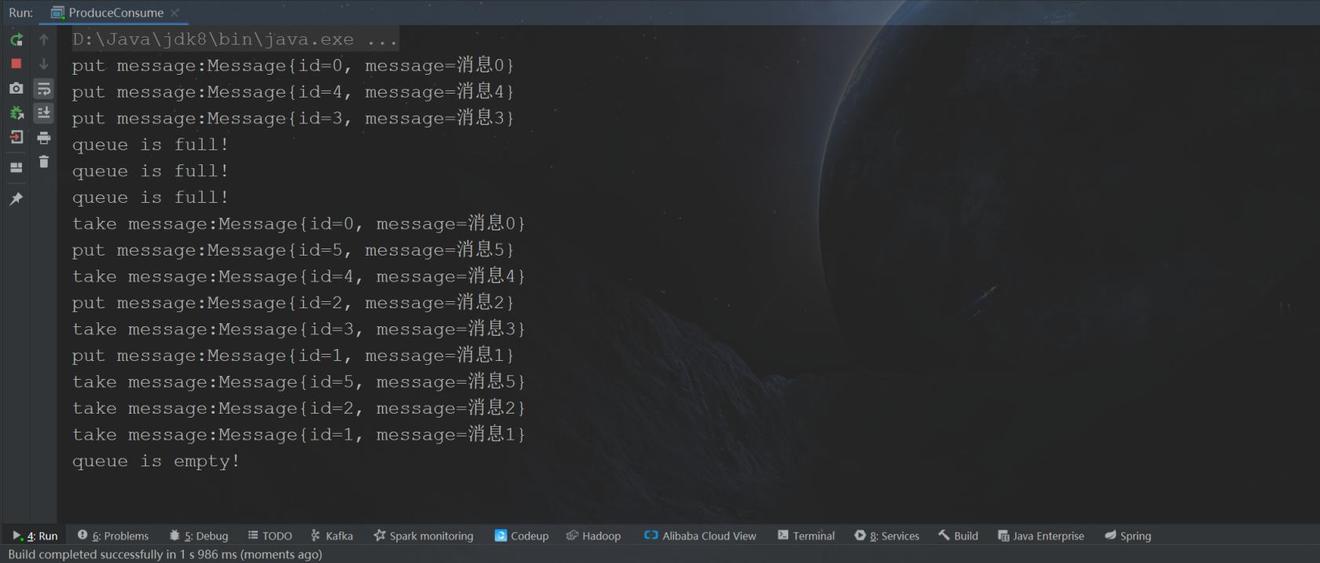生产消费者模式
使用阻塞队列控制消息的产生和消费
代码实现:
| class MessageQueue { | |
| private final LinkedList<Message> list = new LinkedList<>(); | |
| private final int capacity; | |
| public MessageQueue (int capacity) { | |
| this.capacity = capacity; | |
| } | |
| public Message take () { | |
| boolean first = true; | |
| synchronized (list) { | |
| // 空队列检测 | |
| while (list.isEmpty()) { | |
| if (first) { | |
| System.out.println("queue is empty!"); | |
| first = false; | |
| } | |
| try { | |
| list.wait(); | |
| } catch (InterruptedException e) { | |
| e.printStackTrace(); | |
| } | |
| } | |
| list.notifyAll(); | |
| return list.removeFirst(); | |
| } | |
| } | |
| public void put (Message message) { | |
| boolean first = true; | |
| synchronized (list) { | |
| // 溢出检测 | |
| while (list.size() == capacity) { | |
| if (first) { | |
| System.out.println("queue is full!"); | |
| first = false; | |
| } | |
| try { | |
| list.wait(); | |
| } catch (InterruptedException e) { | |
| e.printStackTrace(); | |
| } | |
| } | |
| list.addLast(message); | |
| list.notifyAll(); | |
| } | |
| } | |
| } | |
| final class Message { | |
| private final int id; | |
| private final Object message; | |
| public Message(int id, Object message) { | |
| this.id = id; | |
| this.message = message; | |
| } | |
| public String toString() { | |
| return "Message{" + | |
| "id=" + id + | |
| ", message=" + message + | |
| '}'; | |
| } | |
| } |
测试代码:
| public class ProduceConsume { | |
| public static void main(String[] args) { | |
| MessageQueue queue = new MessageQueue(3); | |
| for (int i = 0; i < 6; i++) { | |
| int id = i; | |
| new Thread(() -> { | |
| Message message = new Message(id, "消息" + id); | |
| queue.put(message); | |
| System.out.println("put message:" + message); | |
| }, "producer:" + i).start(); | |
| } | |
| new Thread(() -> { | |
| while (true) { | |
| try { | |
| TimeUnit.SECONDS.sleep(1); | |
| } catch (InterruptedException e) { | |
| e.printStackTrace(); | |
| } | |
| System.out.println("take message:" + queue.take()); | |
| } | |
| }, "consumer").start(); | |
| } | |
| } |
运行效果:
